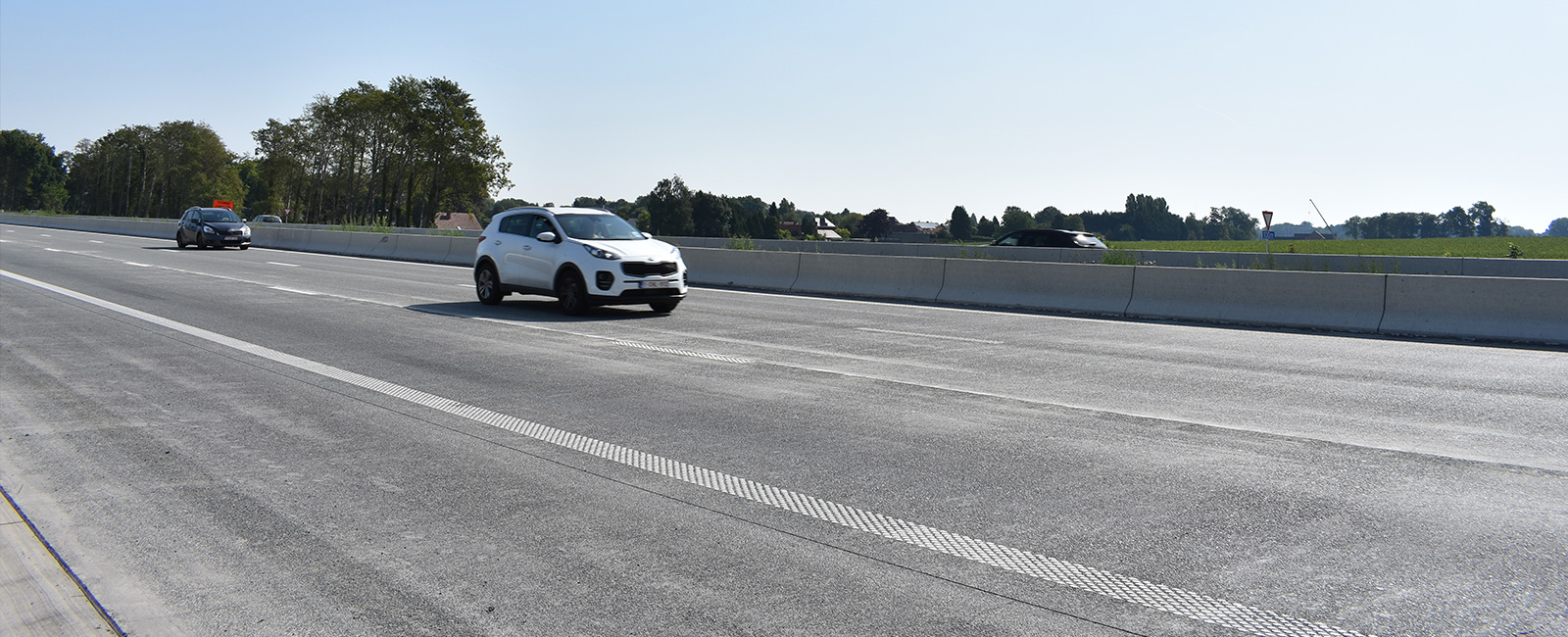Motorways and trunk roads
THE USE OF CONCRETE PAVEMENTS IN MAJOR ROADS
Introduction
Concrete roads have been produced for over 100 years. Modern approaches to costing and to sustainability indicate the likelihood of increased use of this construction method and material in the future.
What are concrete roads? How are they built?
Concrete roads are designed on a conventional composite layered approach, and like other forms of road building, need a firm foundation of base and sub-base. The difference is in the extremely hard and durable wearing course. This course is constructed in one of three ways. It can be jointed plain or jointed reinforced, but the usual technique in motorways and trunk roads is continuously reinforced concrete pavement, known as CRCP, which has the great advantage of having no transverse contraction joints.
Many countries have design guides for specification and construction of all elements in the composite slab.
Concrete roads can be constructed with conventional fixed-form paving, or with slipform techniques, using mobile paving machines (or ‘paving trains’), which ‘extrude’ the finished slab in a series of continuous semi-industrialised operations: spreading, vibrating, curing and texturing the concrete as they move slowly forward.
The concrete itself is usually of lower consistence than structural concrete, and may be specified by flexural strength, rather than conventional compressive strength. In cooler climates it will usually be air-entrained to withstand freeze-thaw cycles.
What are the advantages of concrete roads? Why should they be used?
In the past, flexible asphalt pavements have been constructed more often than concrete ones, essentially because of lower costs of initial construction. Times are changing, however, and it is becoming apparent that concrete has many advantages that are overlooked when simply considering initial construction costs. Newer, better methods of assessment use whole life-cycle analysis, which takes into account the costs (social and economic) of use and maintenance of the pavement.
Looked at in this light, concrete scores highly in any comparison of road construction techniques:
- lasts longer;
- requires fewer and less frequent repairs – in fact, if constructed properly, requires hardly any maintenance over its lifetime;
- can be 100% recycled when necessary;
- makes use of by-products as part of the cement in the mix;
- reduces fuel consumption (at least for heavy trucks).
Considered in this way, it has great advantages in terms both of economics, and also of what society attaches increasing importance to – sustainability.
Furthermore it is increasingly user- and society-friendly, not least in minimizing the number of lane closures for repair and associated congestion levels, which bedevil the life of the ‘consumer’, the driver. The cost savings from this alone cannot be computed!
Solutions have also been found to some of the technical problems observed in some early concrete roads. Roads can now be constructed with very tight tolerances on smoothness; and modern methods of texturing (e.g. exposed aggregate surfaces) guarantee skid resistance, a quiet ride, and acceptable noise levels to people living alongside highways.
Quality assurance and quality of construction is essential in achieving the potential of concrete as a road pavement material, but so it is for any concrete, indeed any construction technique.
EUPAVE expects to see concrete growing in importance as a road construction materialforward into the 21st century.


